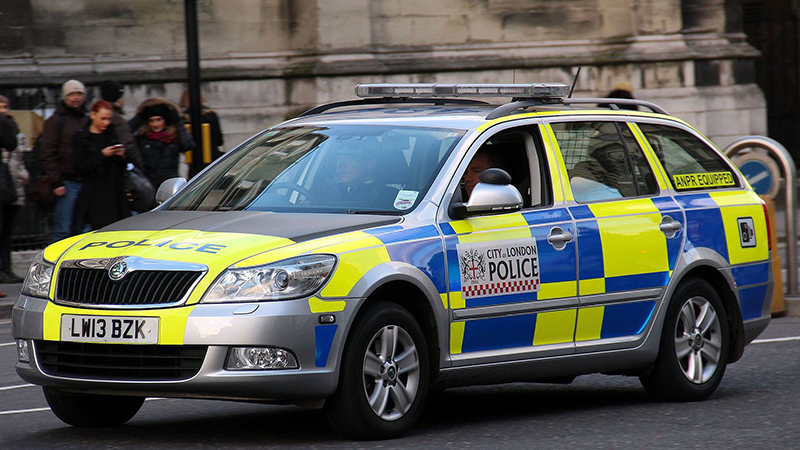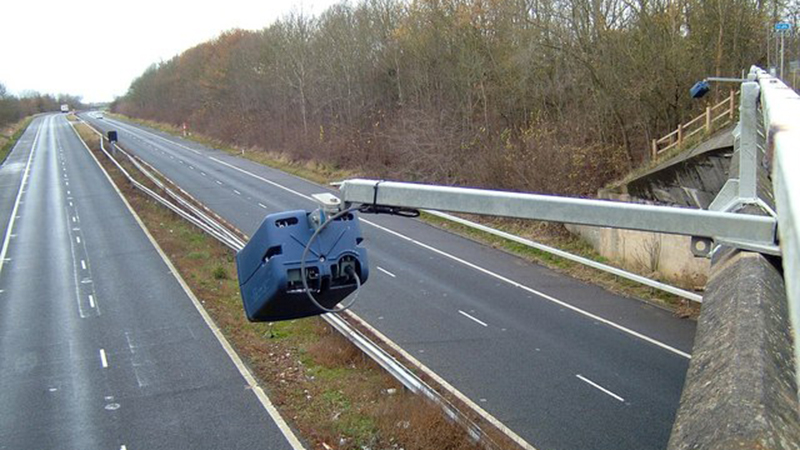We’ve all seen them above motorway gantries, watching over us in city centres and pinging real-time data back to cops from cameras in their patrol cars, but what are ANPR cameras really saying about us and who are they telling it to?

Take a look around next time you’re on the road and you’ll see a huge number of cameras keeping tabs on what you’re up to. Some will be working for law-enforcement agencies, while others will simply be monitoring congestion and tipping off your sat-nav about upcoming jams.
However, it’s ANPR cameras that cause many motorists concern – with their seemingly covert coverage of the UK’s road network and high-tech automated image gathering capabilities.
Here we take a look behind the lens and see what data they’re collecting and who’s using it.
Automatic Number Plate Recognition (ANPR) covers a wide range of camera technology that automatically reads vehicle number plates then records information about that plate, or uses it to cross-reference elsewhere to set off an ‘action’.
Examples of use could be anything from confirming an airport parking booking to tracking behaviour and patterns that could flag the presence of an active terror cell.
You’re most likely to come into contact with ANPR technology being used by car parks, law enforcement teams and Government agencies such as the DVLA and DVSA.
Figures from the end of 2015 suggest around 50million number plates are being recorded – that’s 350 each second of the day. That figure was three times higher than the figure three years ago, so it’s likely to be much higher today.
In 2009 there were a total of 3.7billion ANPR records created, but this had jumped to 11billion in 2014/15.
Research from 2015 revealed that the average motorist could expect to be ‘captured’ on the police database around six times a week. 
What do the police use ANPR-farmed data for?
Every police force in England and Wales has ANPR technology and because fewer officers are actively on patrol, the cameras play an increasingly important role in crime prevention and detection. People committing motoring offences such as road tax evasion, driving without an MOT or insurance are also targets.
ANPR is also used to disrupt criminal activity, with everything from burglary to drug dealing and terrorism in the sights of these smart cameras.
Cameras can also be used to flag cloned cars or those using number plates that don’t comply with regulations.
Yes. As the name suggests, any car that comes into sight of the ANPR camera will have its details checked and any ‘relevant’ information will be flagged to the cops in the car.
The police vehicle does not need to be directly behind a car, the cameras can cover multiple lanes and directions of travel. They also work in dark and poor weather conditions – albeit with less accuracy.
As you pass the camera, your vehicle’s registration mark is checked against a number of databases. These include the following:
Police National Computer (PNC)
Driver and Vehicle Licensing Agency (DVLA)
Motor Insurers’ Bureau (MIB)
These are known as ‘hotlists’ and if a vehicle registers on one of them, an alert – known as a ‘hit’ – is triggered.
This ensures the police officer is immediately alerted to vehicles that could be stolen, unregistered, unlicensed, uninsured or believed or known to be involved in crime.
REVEALED: SPEED CAMERAS ON THE UK’S ROADS
Once read by a ‘police’ camera, it’s likely your details will be instantly cross-referenced against multiple databases used by the cops and other law-enforcement agencies.
If a vehicle is flagged as being involved in a crime, or not having the correct documentation, an action will be triggered to issue a summons/fine etc.
It can also help tracked cloned vehicles, by automatically detecting impossibly quick journeys.
If your car is flagged as being of interest, a variety of symbols or warnings will flash up. These will indicate the level of offence and issue a priority rating. For example, a sex offender could be flagged as high priority, while someone without tax would rate much lower.
Not all police vehicles will be equipped with these cameras and exact figures are hard to come by. A large force such as the Metropolitan Police will have a many camera-equipped cars, while a smaller force such as Dorset has just 18. Information on numbers for each Force can usually be found on their websites. 
Figures reveal that England and Wales are covered by a network of more than 9,000 ANPR cameras. Expect this figure to be far greater today as the risk of terrorism and organised crime increases.
London has the largest network of cameras with 1,291 Met-controlled units in 2015, followed by the West Midlands with 426, Merseyside with 397, Hertfordshire with 256 and West Yorkshire with 246, according to the Mirror Online.
The police do not officially reveal the locations of ANPR cameras, because this would be of benefit to criminals. However, expect all motorways and towns to have some form of coverage.
Figures reveal there’s around one police ANPR camera for every 27.3 miles of UK roads.
Details of your journey will be stored by cops for up to two years, allowing many of your movements to be tracked in virtual real-time over this period. These details are recorded regardless of whether any offence has been committed.
Police have clear rules to control who can access ANPR data. Police staff only have access to the ANPR data if it’s relevant to their role. The majority of those who are permitted to access it may only do so for a maximum period of 90 days from when it was collected. However, some police staff are authorised to access data for up to two years with the authorisation of a senior officer. 
No. Details of vehicle movements and offences are not passed on to non-police organisations.
No – DVLA and DVSA vehicles also use such cameras, but these are concerned with catching drivers without tax and MOT.
The London Congestion Charge zone and Dartford Crossing are also controlled by ANPR systems.
No. These are part of the TrafficMaster network. They provide real-time information on traffic speed and congestion. The information is passed on to popular sat-nav systems such as Garmin.
They are not used to help prosecute or individually track motorists. 

As Joe Louis once said. ”You can run but you cant hide”